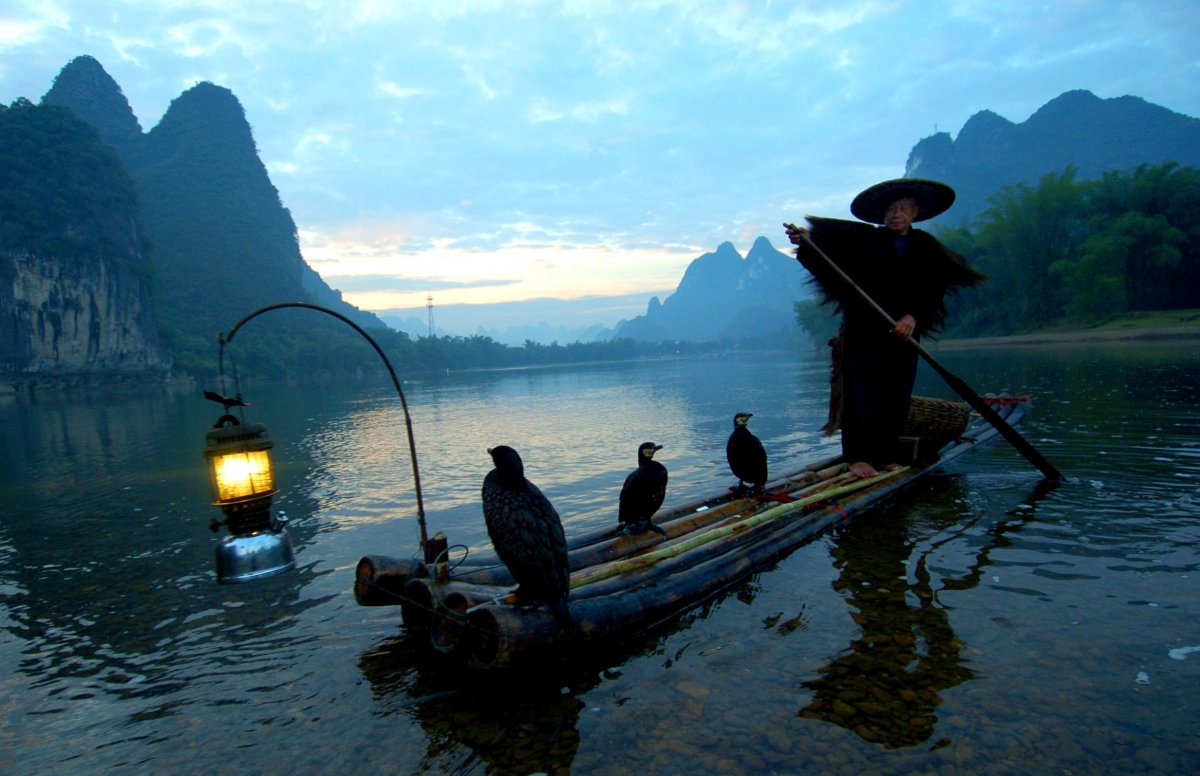
Cormorant fishing on China’s Li River is all but dying out.
Fisherman set out with domesticated cormorants, a seabird, on bamboo rafts before sunrise and often in the early evening. These birds prey on fish. But the fishermen tie threads around the necks of the cormorants to prevent them from swallowing the fish they catch.
Once the threads are set, the fishermen begin chanting on their boats to prompt the birds to dive down and retrieve the fish. They control their birds with long poles.
Unable to compete with modern fishing, cormorant fishing on the river Li is now largely practiced for tourists.
“Wild China”, a documentary series produced by BBC and CCTV, has an exceptional segment on this 1,300-year old fishing technique, which is also practiced in Japan.
Here’s a look at how cormorant fishing works:
Local fishermen and their cormorants set off on their boats in China’s Yongjia County, Zhejiang Province.
Reuters
The fishermen spend years training the birds to return to the boat with their catch.
AP Photo / Xinhua Zhou Hua
A fisherman ties a thread made of hemp around the cormorant’s neck.
AP Photo / Greg Baker
A cormorant races after a fish underwater.
BBC WordWide via YouTube
A cormorant is handled by a local fisherman as it retrieves a fish to the boat.
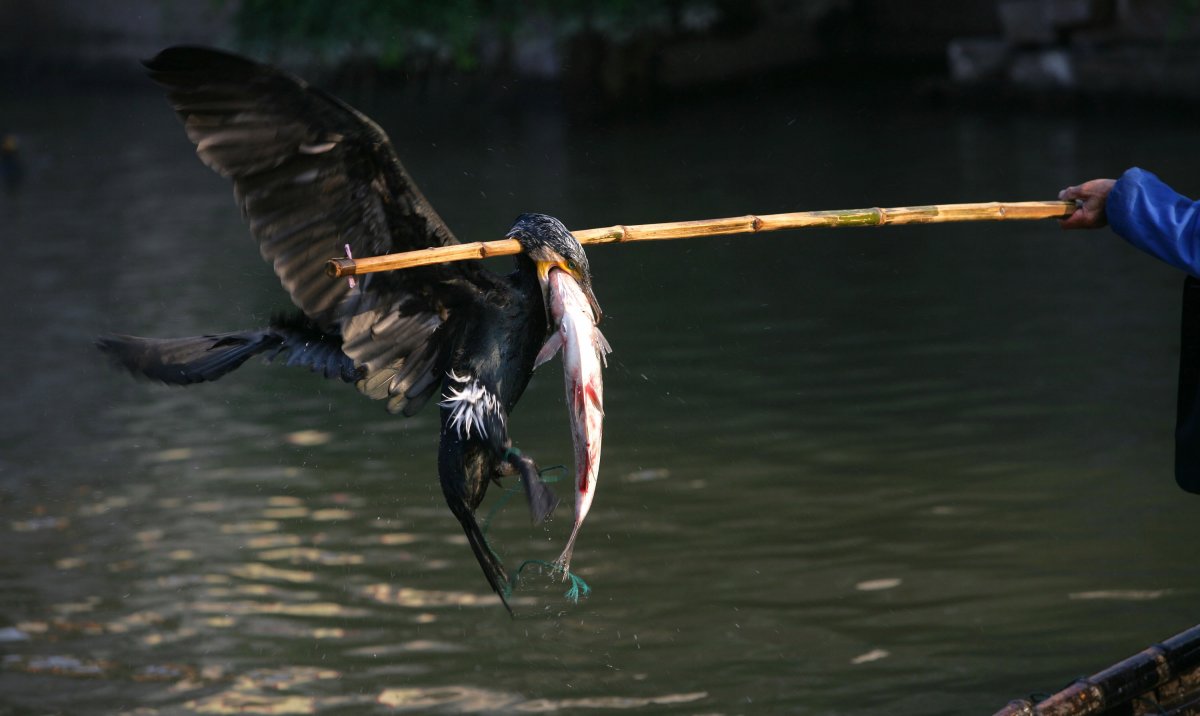
The fishermen reward the cormorants with smaller fish.
It is believed that cormorants can keep an approximate tally of the fish they catch and if they aren’t rewarded for their efforts, they stop diving after fish for the fishermen.
REUTERS/Mark Ralston
You can watch the segment on cormorant fishing from “Wild China” here:


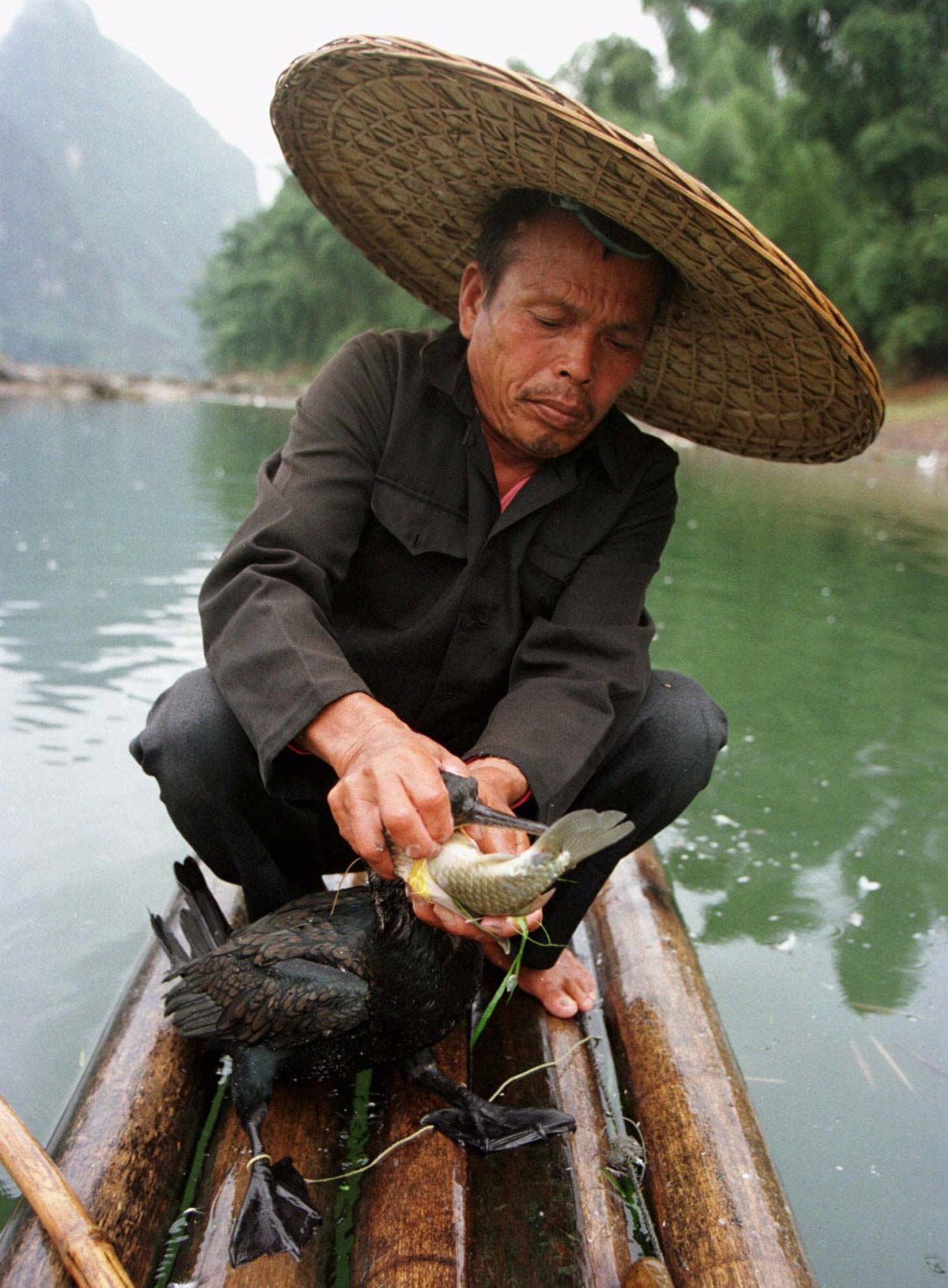
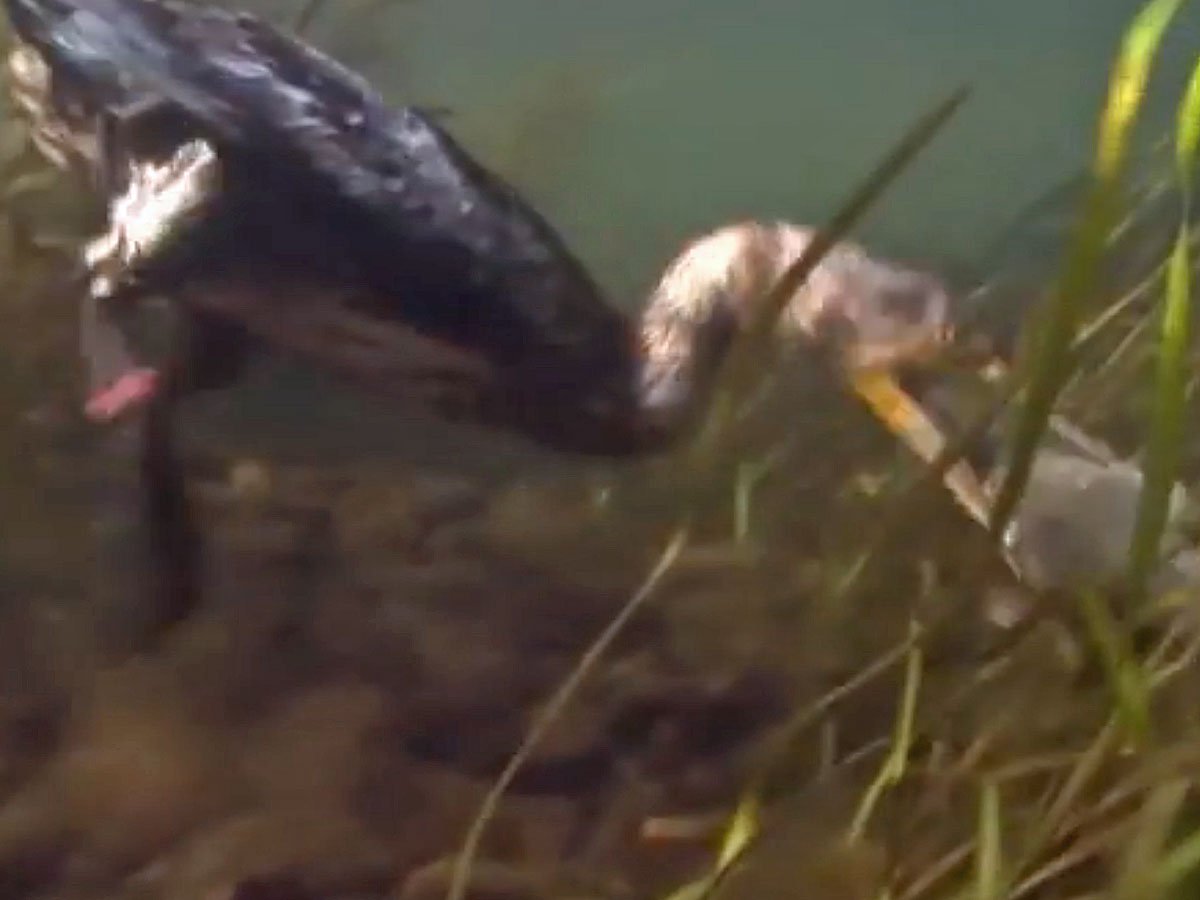

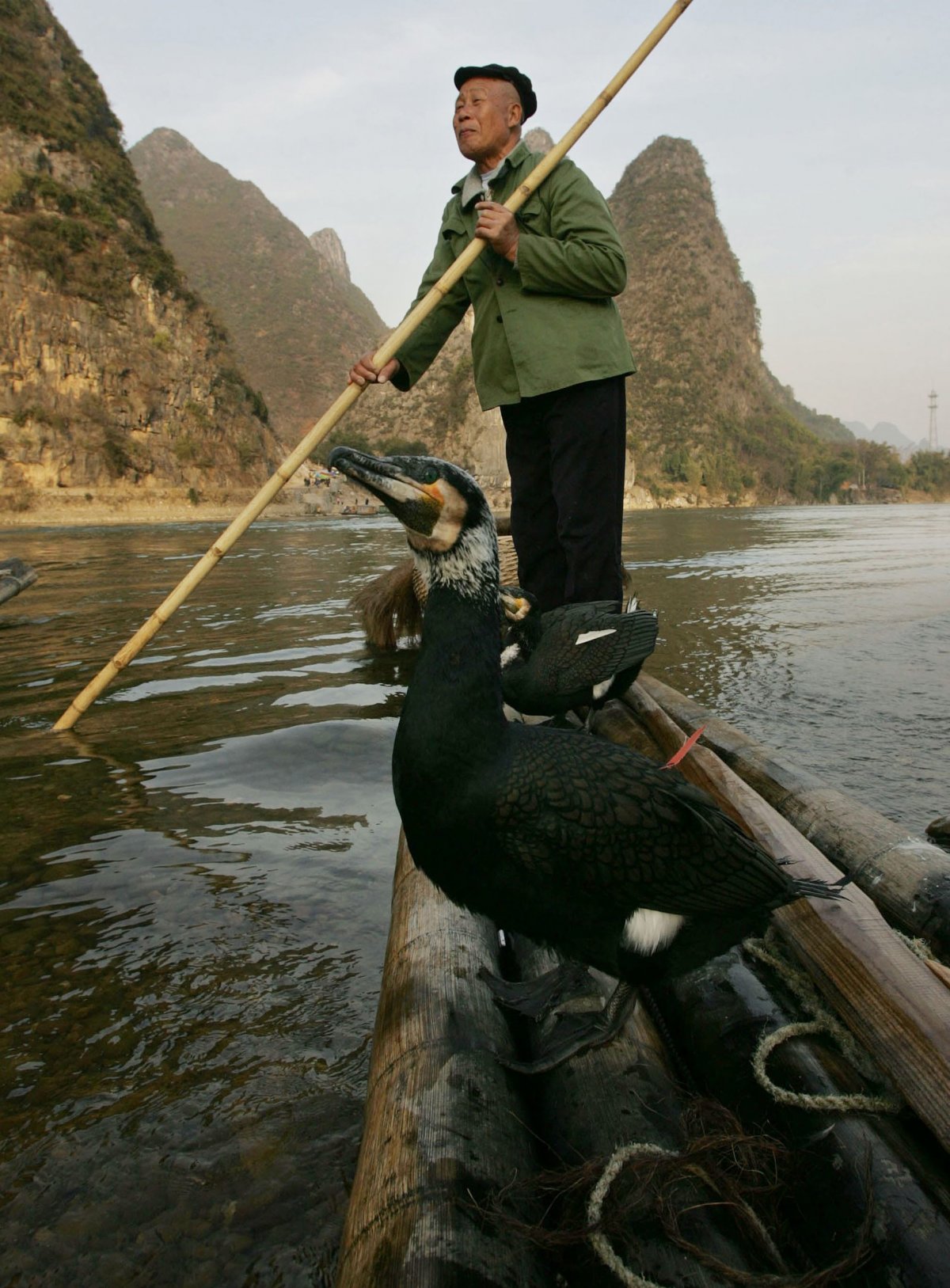

 Enjoy sights and traditions of Japan’s heartland in new Gifu prefecture-focused feature【Video】
Enjoy sights and traditions of Japan’s heartland in new Gifu prefecture-focused feature【Video】 Starbucks’ cool new Japan Geography tumblers will take you on a trip around the country
Starbucks’ cool new Japan Geography tumblers will take you on a trip around the country Enjoy viewing Kyoto’s cherry blossoms from above on a guided zipline tour
Enjoy viewing Kyoto’s cherry blossoms from above on a guided zipline tour There’s something fishy about that catch! People in Chinese city urged not to eat floating carp
There’s something fishy about that catch! People in Chinese city urged not to eat floating carp Fisherman catches unreal-looking fish off the coast of Japan, turns out to be quite harmless
Fisherman catches unreal-looking fish off the coast of Japan, turns out to be quite harmless McDonald’s new Happy Meals offer up cute and practical Sanrio lifestyle goods
McDonald’s new Happy Meals offer up cute and practical Sanrio lifestyle goods All-you-can-drink Starbucks and amazing views part of Tokyo’s new 170 meter-high sky lounge
All-you-can-drink Starbucks and amazing views part of Tokyo’s new 170 meter-high sky lounge More foreign tourists than ever before in history visited Japan last month
More foreign tourists than ever before in history visited Japan last month Starbucks reopens at Shibuya Scramble Crossing with new look and design concept
Starbucks reopens at Shibuya Scramble Crossing with new look and design concept Studio Ghibli glasses cases let anime characters keep an eye on your spectacles
Studio Ghibli glasses cases let anime characters keep an eye on your spectacles Beautiful Sailor Moon manhole cover coasters being given out for free by Tokyo tourist center
Beautiful Sailor Moon manhole cover coasters being given out for free by Tokyo tourist center Imitation crab meat shrine built in Kobe
Imitation crab meat shrine built in Kobe Hamster abandoned at Tokyo ramen restaurant gets new home
Hamster abandoned at Tokyo ramen restaurant gets new home The oldest tunnel in Japan is believed to be haunted, and strange things happen when we go there
The oldest tunnel in Japan is believed to be haunted, and strange things happen when we go there Toyota built a life-sized Miraidon Pokémon and are letting people test drive it this weekend
Toyota built a life-sized Miraidon Pokémon and are letting people test drive it this weekend Disney princesses get official manga makeovers for Manga Princess Cafe opening in Tokyo
Disney princesses get official manga makeovers for Manga Princess Cafe opening in Tokyo We try out “Chan Ramen”, an underground type of ramen popular in the ramen community
We try out “Chan Ramen”, an underground type of ramen popular in the ramen community Beautiful new Final Fantasy T-shirt collection on the way from Uniqlo【Photos】
Beautiful new Final Fantasy T-shirt collection on the way from Uniqlo【Photos】 Foreign English teachers in Japan pick their favorite Japanese-language phrases【Survey】
Foreign English teachers in Japan pick their favorite Japanese-language phrases【Survey】 Is the new Shinkansen Train Desk ticket worth it?
Is the new Shinkansen Train Desk ticket worth it? There’s a park inside Japan where you can also see Japan inside the park
There’s a park inside Japan where you can also see Japan inside the park Japanese convenience store packs a whole bento into an onigiri rice ball
Japanese convenience store packs a whole bento into an onigiri rice ball Studio Ghibli releases Kiki’s Delivery Service chocolate cake pouches in Japan
Studio Ghibli releases Kiki’s Delivery Service chocolate cake pouches in Japan Japan’s bone-breaking and record-breaking roller coaster is permanently shutting down
Japan’s bone-breaking and record-breaking roller coaster is permanently shutting down New definition of “Japanese whiskey” goes into effect to prevent fakes from fooling overseas buyers
New definition of “Japanese whiskey” goes into effect to prevent fakes from fooling overseas buyers Foreign passenger shoves conductor on one of the last full runs for Japan’s Thunderbird train
Foreign passenger shoves conductor on one of the last full runs for Japan’s Thunderbird train Our Japanese reporter visits Costco in the U.S., finds super American and very Japanese things
Our Japanese reporter visits Costco in the U.S., finds super American and very Japanese things Kyoto bans tourists from geisha alleys in Gion, with fines for those who don’t follow rules
Kyoto bans tourists from geisha alleys in Gion, with fines for those who don’t follow rules Studio Ghibli unveils Mother’s Day gift set that captures the love in My Neighbour Totoro
Studio Ghibli unveils Mother’s Day gift set that captures the love in My Neighbour Totoro Domino’s Japan now sells…pizza ears?
Domino’s Japan now sells…pizza ears? New Japanese KitKat flavour stars Sanrio characters, including Hello Kitty
New Japanese KitKat flavour stars Sanrio characters, including Hello Kitty Sales of Japan’s most convenient train ticket/shopping payment cards suspended indefinitely
Sales of Japan’s most convenient train ticket/shopping payment cards suspended indefinitely Sold-out Studio Ghibli desktop humidifiers are back so Totoro can help you through the dry season
Sold-out Studio Ghibli desktop humidifiers are back so Totoro can help you through the dry season Japanese government to make first change to romanization spelling rules since the 1950s
Japanese government to make first change to romanization spelling rules since the 1950s Ghibli founders Toshio Suzuki and Hayao Miyazaki contribute to Japanese whisky Totoro label design
Ghibli founders Toshio Suzuki and Hayao Miyazaki contribute to Japanese whisky Totoro label design Doraemon found buried at sea as scene from 1993 anime becomes real life【Photos】
Doraemon found buried at sea as scene from 1993 anime becomes real life【Photos】 Tokyo’s most famous Starbucks is closed
Tokyo’s most famous Starbucks is closed One Piece characters’ nationalities revealed, but fans have mixed opinions
One Piece characters’ nationalities revealed, but fans have mixed opinions We asked a Uniqlo employee what four things we should buy and their suggestions didn’t disappoint
We asked a Uniqlo employee what four things we should buy and their suggestions didn’t disappoint Princesses, fruits, and blacksmiths: Study reveals the 30 most unusual family names in Japan
Princesses, fruits, and blacksmiths: Study reveals the 30 most unusual family names in Japan Studio Ghibli’s new desktop Howl’s Moving Castle will take your stationery on an adventure
Studio Ghibli’s new desktop Howl’s Moving Castle will take your stationery on an adventure 9 futuristic jobs we could see by 2030
9 futuristic jobs we could see by 2030 China’s polluted rivers can be surprisingly pretty, but might turn you into a mutant
China’s polluted rivers can be surprisingly pretty, but might turn you into a mutant Huge tuna fish sells for a whopping 190 million yen at the first wholesale auction of the year
Huge tuna fish sells for a whopping 190 million yen at the first wholesale auction of the year Japanese fishermen start morning wake-up call service to help you get your lazy butt out of bed
Japanese fishermen start morning wake-up call service to help you get your lazy butt out of bed Japan’s secret garbage problem–and what you can do to help
Japan’s secret garbage problem–and what you can do to help Rare ghost-white tuna caught off Bali — we go to see it on display in Shibuya!
Rare ghost-white tuna caught off Bali — we go to see it on display in Shibuya! The surprising and little-known Japanese art of gyotaku: culinary prints made with real fish
The surprising and little-known Japanese art of gyotaku: culinary prints made with real fish 7 incredible Japanese destinations that tourists haven’t discovered yet
7 incredible Japanese destinations that tourists haven’t discovered yet Heroic fisherman who caught PM Kishida’s attacker now a fashion icon
Heroic fisherman who caught PM Kishida’s attacker now a fashion icon Japanese hip hop group Rishiri Boys boasts local pride, mad skills, and an average age of 82
Japanese hip hop group Rishiri Boys boasts local pride, mad skills, and an average age of 82 Abandoned Chinese fishing village gets a natural facelift and it’s awesome 【Photos】
Abandoned Chinese fishing village gets a natural facelift and it’s awesome 【Photos】 Johnnys’ Jr. group leader makes breakthrough discovery in marine biology in downtown Osaka
Johnnys’ Jr. group leader makes breakthrough discovery in marine biology in downtown Osaka Turn a cheap ice cream into a luxury dessert with katsuobushi bonito fish flakes
Turn a cheap ice cream into a luxury dessert with katsuobushi bonito fish flakes Takoyaki boat tray comes to life in Japan, sails down river near Tokyo
Takoyaki boat tray comes to life in Japan, sails down river near Tokyo We try Keiji, an incredibly rare and expensive one-in-ten-thousand salmon sushi 【Taste test】
We try Keiji, an incredibly rare and expensive one-in-ten-thousand salmon sushi 【Taste test】 Rare Fish Festival in Tokyo serves up dishes so good that oil may leak from your anus!
Rare Fish Festival in Tokyo serves up dishes so good that oil may leak from your anus!
Leave a Reply